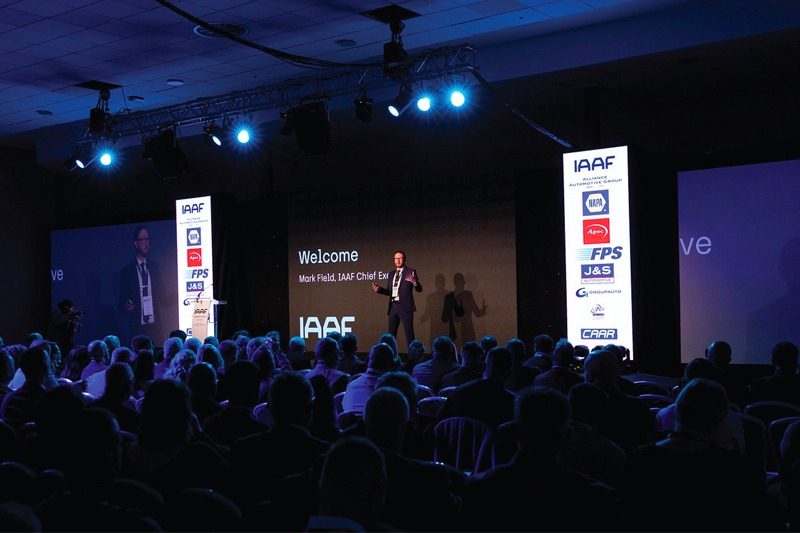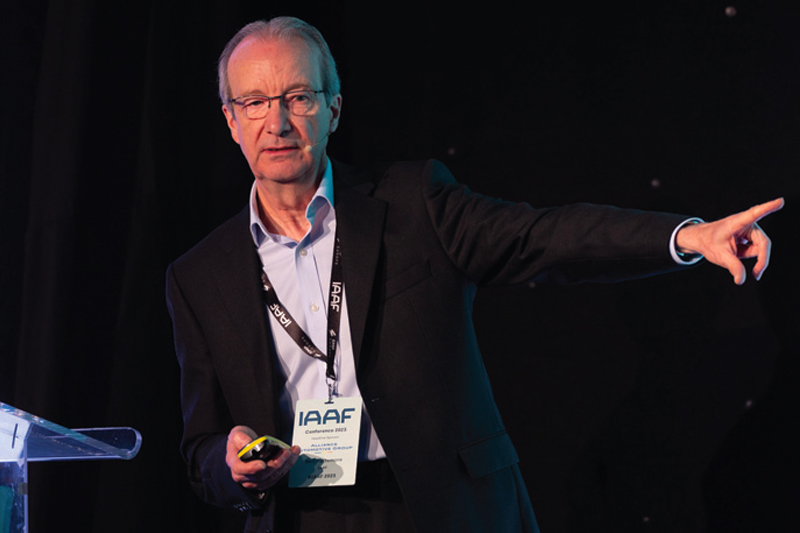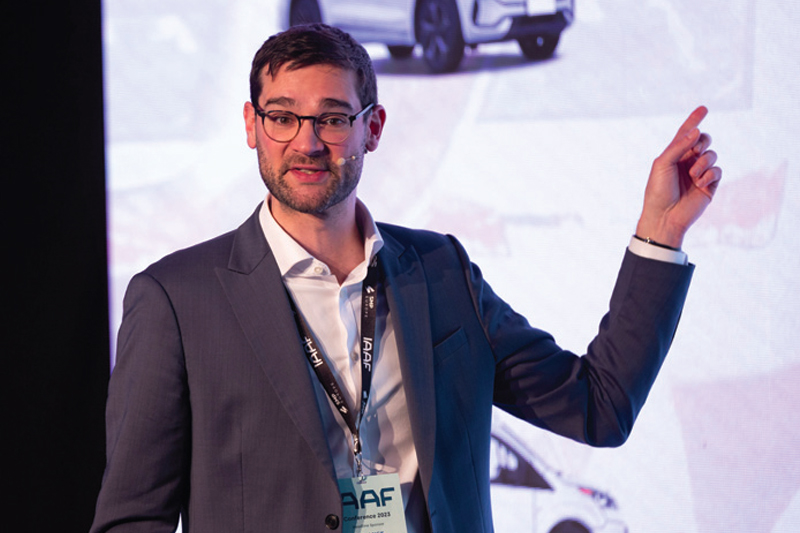
PMM’s editor Kieran Nee brings you the most important updates from the recent IAAF conference.
When I spoke to GiPA’s Quentin Le Hetet for the PMM Podcast earlier this year, he mentioned, with a certain level of surprise, how resilient the UK car market and aftermarket had been since the pandemic. The rise in the cost of living, the sharpest and most substantial in years, had the potential to devastate the car repair sector. What we’ve seen, instead, is that car repair business has remained buoyant and continued its bounceback since the pandemic. This comes down to two factors, both discussed by Quentin at the previous IAAF conference in 2022: the ageing car parc encouraging drivers to repair rather than replace; and the high priority drivers place on car repair, forgoing many other luxuries before skimping on garage bills. One area which Quentin expressed concern over on our podcast, was the direct effect the cost of living would have on workshop owners: would heating bills, equipment maintenance, labour costs, rents all rise too much to cope with?
The theme of 2023’s conference was, accordingly, The Brilliance of Resilience and its main focus was summed up neatly by Le Hetet in his talk – garages don’t simply need to survive to be resilient, they need to thrive “in the face of adversity”. One area where the independent aftermarket can hardly be said to be thriving is in attracting and retaining staff members, with, according to Le Hetet, 90 per cent of independents claiming the staffing situation is “very challenging”. Interestingly, franchised dealers are having just as hard a time of it, with 92 per cent saying the same as their IAM counterparts. One solution offered in the talk was apprenticeships and this may be where the dealers are putting in place a longer term solution than workshops. 65 per cent of franchised dealers employ one or more apprentices; the figure for the IAM is less than half that, at 23 per cent. Although the average size of a garage compared to a dealer must surely play a part in the lower take up of apprentices, the number one reason given according to GiPA (and one that I have heard several times from garages) is surely indicative of the dire state of apprenticeships in the aftermarket: “I never thought of it”.

Still work to be done
Opening the conference, which was apparently the largest in the IAAF’s history, was IAAF technical director and regular PMM-contributor, Neil Pattemore. Pattemore, who gives regular talks at Mechanex and Automechanika, gave a “state of the nation” address and cemented his role as the aftermarket’s unofficial spokesperson. He relayed to the audience at the MK Dons stadium the results of the various lobbying work the IAAF had been involved in over the past year, summing it up in characteristically humble fashion: “Some good results, but still a lot of work to be done”.
The big news, I suppose, is that the UK’s Motor Vehicle Block Exemption Order, or MV-BEO for slightly less wieldy shorthand, now replaces the EU’s MV-BER (the R stands for regulation) and is, in Neil’s view, “much better”. I’m not sure it was competition law surrounding the right for the aftermarket to repair vehicle manufacturer’s cars in a fair and accessible manner that the Vote Leave campaign had in mind eight years ago but here we are, Brexit has finally brought some benefit to someone, somewhere.
So what are the headline changes? Most of the changes, it seems, revolve around updating definitions in the guidelines to incorporate the new, highly software-dependent, vehicles on the road. For instance, Aftermarket Goods, Spare Parts, Repair and Maintenance Services and Supplier have all had their definitions updated to take notice of the fact that software, codes, updates etc are all necessary features of a modern repair and also that diagnostics and all that it entails is a necessary process to be undertaken. Interestingly, also added into the mix this time around are fluids, lubricants and oils, also reflecting changes to those systems.

Crucially, the MV-BEO includes covenants preventing the vehicle manufacturers from restricting the aftermarket from purchasing OE parts in any capacity or accessing vehicle data. What’s more, the new order makes provisions for the future, by “introducing the notion of ‘technical progress’”. I.e. VMs won’t be able to avoid their duties using a technicality as technology (their technology) progresses. On the production and sale side of things, warranty parts are now referred to as “matching quality parts”.
Emission impossible?
Also covered in Pattemore’s talk was the oncoming Euro 7 emissions regulations, set to impact ICE vehicles from July 2025. NOx naysayers will be happy to hear that “nonexhaust emissions” will for the first time be taken into account, meaning the minor furore surrounding tyre particulates will be addressed. Why EVs escape this scrutiny remains a mystery. A big boon for the future of the planet is that vehicles under Euro 7 will need to supply real time On-Board Monitoring of data to be compliant. This replaces the wonderfully corruptible system currently in place, where VMs report any problems they encounter with their vehicles’ emissions to… themselves (and we all know how well that goes). One interesting conundrum is raised here, which previously flew blissfully under the radar. The VMs argue that only OEM parts can be used to ensure the accuracy of the OBM. This is perhaps not a completely unreasonable argument, especially when you consider the propensity for aftermarket parts to add weight, increasing emissions for the sake of performance. If you had been paying attention to Mr Pattemore’s talk up to this point (and he was stretching my capacity for understanding to breaking point by now), you would notice that that need for OEM parts flies directly in the face of the MVBEO’s need for full aftermarket replicability. IAAF queried it and won. What the next step is, however, is far from clear.









